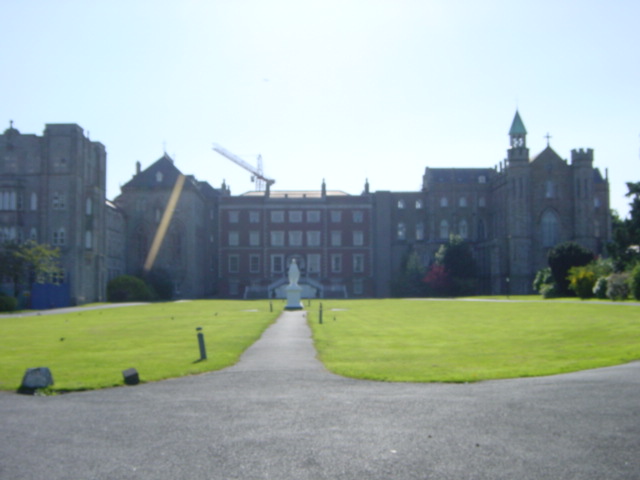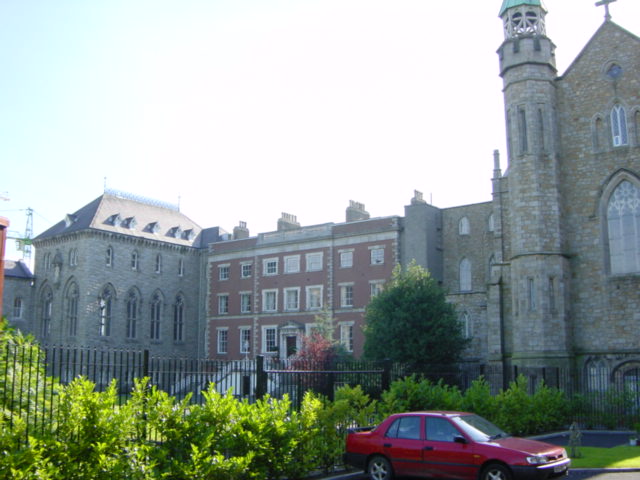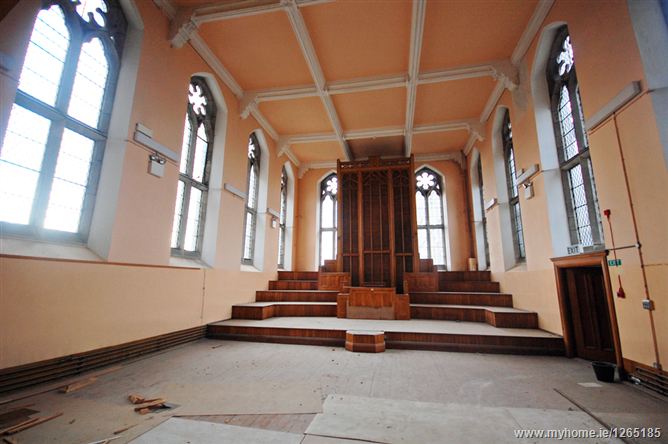Loreto Abbey Rathfarnham
Loreto Abbey is surely one of the most stunning buildings in Rathfarnham and it is a marvellous example of Georgian architecture. The buildings are so big and distinctive that you can easily spot them from the Dublin Mountains.
In 1996, the school began to phase out boarders and it closed its doors in 1999 for the very last time after 247 years of educating young women. A preservation order was passed which now protects the buildings.
In 1999 , the building company Riversmith acquired a site (12.1 acres) at the rear of the granite faced Georgian buildings for €14 million. They built 10 apartment blocks containing 271 apartments.
In December 2011, the BBC filmed a number of scenes at Loreto Abbey for the docu drame series, 'Titanic. Blood and Steel.'
Today, the property is under the control of Nama.
 |
A Short History Mr. Palliser invented a tubing for guns and a type of ammunition, which became known as 'Palliser's shot'. Palliser was a member of the aristocracy and he entertained guests such as Dean Swift, George Frideric Handel and Thomas Moore in Rathfarnham. It is believed that Thomas Moore wrote his famous poem |
Oft in the Stilly Night' in the grounds of Loreto Abbey. Folklore has it that during a banquet one night, the gathering wanted Moore to compose a poem so they locked him in one of the rooms until he came out with the masterpiece.
In 1789, Rathfarnham House was bought by George Grierson, King's Printer in Ireland. The title 'King's Printer' was given to the family in 1727 on the advice of Lord Carteret.
The Act of Union 1800 brought an end to the position of 'King's Printer' and George Grierson left Rathfarnham House after being heavily compensated and went to Woodtown House where he took up farming.
| The School Rathfarnham House was left vacant until the Catholic Archbishop of Dublin, Dr. Daniel Murray bought it for £2,000 in 1821. His aim was to educate children at the establishment. In 1822, after significant renovation, Sr. Teresa (Frances Ball) and her fellow sisters moved into the building. Sr. Teresa became known as Mother Teresa since she was the head of the order. She renamed the place Loreto, in honour of the Holy House in Nazareth, Loreto, Italy. Mother Teresa began a building programme and this was continued on by her successors. |
 |
In 1822, the school offered French, Italian, Spanish, English, history, geography, writing, arithmetic, needlework, painting, drawing and music, which included the harp and piano. In 1884, the boarding school had become so renowned that Daniel O'Connell enrolled his two daughters. Those who didn't have the means to pay the fees were able to place their children in a 'poor school' free of charge.
Mother Teresa died on 22nd May 1861 and she was laid to rest in a vault in the chapel at Loreto Abbey. Her building plans continued after her death. In 1863, the novitiate was added followed by the Concert Hall and Reflectory in 1869. St. Anthony's wing and the Francis Xavier wing were built in 1896 and 1903 respectively.
Mother Teresa Mother Teresa came back to visit Loreto Abbey in 1974 and 1993. |
Boarding School
In its prime, Loreto Abbey housed up to 200 pupils. In 1996, the school began to phase out boarders and it closed its doors in 1999 for the very last time after 247 years of educating young women. A preservation order was passed which now protects the buildings.
School Memories from the Abbey
Strong long life friendships were formed by all boarders at Loreto. In this edited excerp from the Loreto Abbey Rathfarnham Association, one student remineses about her time at Loreto.
'''On my first night in the Abbey, as I lay in my bed in St. Anne's Dormitory after lights out, I heard someone crying. I was too scared to leave my cubicle but realising the crying was coming from the person next to me, I stood up on my bed-head and peered over the partition. I asked the girl if she was ok, and we had a whispered chat about being a bit nervous and homsick. A friendship was forged that night, the first of many. Setting into life in the Abbey was made easy by such friendships.''
There are memories which epitomise school days for us.
The high pitched squeals of delight when we met again after week-ends at home, Sr. Maxentia's cure-all, paracetamol, fire drill at night, mid-night feasts, post at dinner, and music practice each evening.
These still bring a smile to our faces.''
Deterioration
Since NAMA took ownership of Loreto Abbey, the buildings and grounds have fallen into disrepair.
The images below sadly show the transformation of the Concert Hall.
 |
 |

